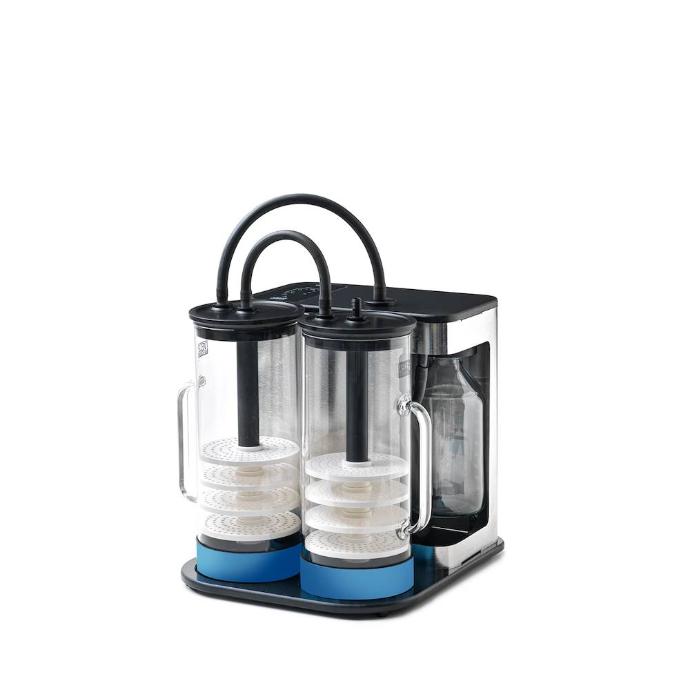- Analytical chemistry
- Automated Liquid Handling
- Capillary Electrophoresis
- Cell culture and Fermentation
- Cell health
- Centrifugation
- Chromatography (flash & prep)
- Cleaning
- Clinical Automation (TLA)
- Clinical IT solutions
- Clinical chemistry
- Clinical quality controls
- Color-Appearance and Physical tests
- DNA / RNA (Nucleic acids)
- Disinfection
- Electrochemistry
- Environmental monitoring
- Flow cytometry
- Flow cytometry Cell sorting
- Freeze drying
- Heating & cooling
- Hematology
- Imaging
- Immuno-Hematology
- Immunoassay
- In Vitro Fertilization (IVF)
- Lab furniture & design studies
- Liquid Handling (Manual)
- Mass spectrometers
- Material testing
- Metrology
- Microbiology (Clinical)
- Microscopy
- Moisture analysis
- Nephelometry
- POCT
- Particle characterization
- Platelet aggregation
- Protection cabinets
- Pumping
- Sample preparation
- Shakers and stirrers
- Sterilization
- Storage
- Synthesis
- Tablet testing
- Texture analyzers
- Toxicology
- Urine analysis
- Viscometry
- Water purification
- Weighing
- Analytical chemistry Kjeldahl analysis
- KS 1000 Scrubber
HOME / APPLICATIONS & TECHNIQUES /
KS 1000 Scrubber
Reference: VEL-F307A0660
https://www.analis.com/shop/vel-f307a0660-ks-1000-scrubber-123367 https://www.analis.com/web/image/product.template/123367/image_1920?unique=689d05dThe KS 1000 Scrubber is engineered to safeguard the laboratory environment and the health of the operators by eliminating exposure to harmful acid fumes produced during the Kjeldahl digestion or other processes.
The KS 1000 Scrubber effectively neutralizes corrosive and toxic gases in 2 steps:
- Dilution: in the right tank, reaction gases flow into a water solution, where they are effectively dissolved. This step allows for trapping even part of the sulfur dioxide produced during digestion.
- Neutralization: in the left glass tank, reaction gases are neutralized in a sodium hydroxide solution. Thanks to a wide contact surface between gas and liquid, the KS 1000 Scrubber achieves maximum neutralization efficiency.
In specific applications, an optional activated carbon filter can be used to absorb odors produced during oxidative mineralization.

Technical information
|
CONSTRUCTION MATERIAL |
Metal structure and PVC components |
|
WORKING IN CONTINUOUS |
Admitted |
|
FLOW REGULATION |
Up to 25 l/min |
|
SYSTEM SUCTION CAPACITY |
Adjustable; down to 200 mbar abs |
|
CAPACITY OF GLASS TANKS |
3.5 L |
|
POWER INPUT |
130 W |
|
CURRENT CONSUMPTION |
500 mA |
|
WEIGHT |
11 Kg (24.3 lb) |
|
DIMENSIONS (WXHXD) |
315x335x360mm (12.4x13.2x14.2 in) |
Related documents
DOCUMENT NAME
RELEASE DATE
DOWNLOAD
Automated Liquid Handling
Capillary Electrophoresis
Cell culture and Fermentation
Cell health
Centrifugation
Chromatography (flash & prep)
Cleaning
Clinical Automation (TLA)
Clinical IT solutions
Clinical chemistry
Clinical quality controls
Color-Appearance and Physical tests
DNA / RNA (Nucleic acids)
Disinfection
Electrochemistry
Environmental monitoring
Flow cytometry
Flow cytometry Cell sorting
Freeze drying
Heating & cooling
Hematology
Imaging
Immuno-Hematology
Immunoassay
In Vitro Fertilization (IVF)
Lab furniture & design studies
Liquid Handling (Manual)
Mass spectrometers
Material testing
Metrology
Microbiology (Clinical)
Microscopy
Moisture analysis
Nephelometry
POCT
Particle characterization
Platelet aggregation
Protection cabinets
Pumping
Sample preparation
Shakers and stirrers
Sterilization
Storage
Synthesis
Tablet testing
Texture analyzers
Toxicology
Urine analysis
Viscometry
Water purification
Weighing
